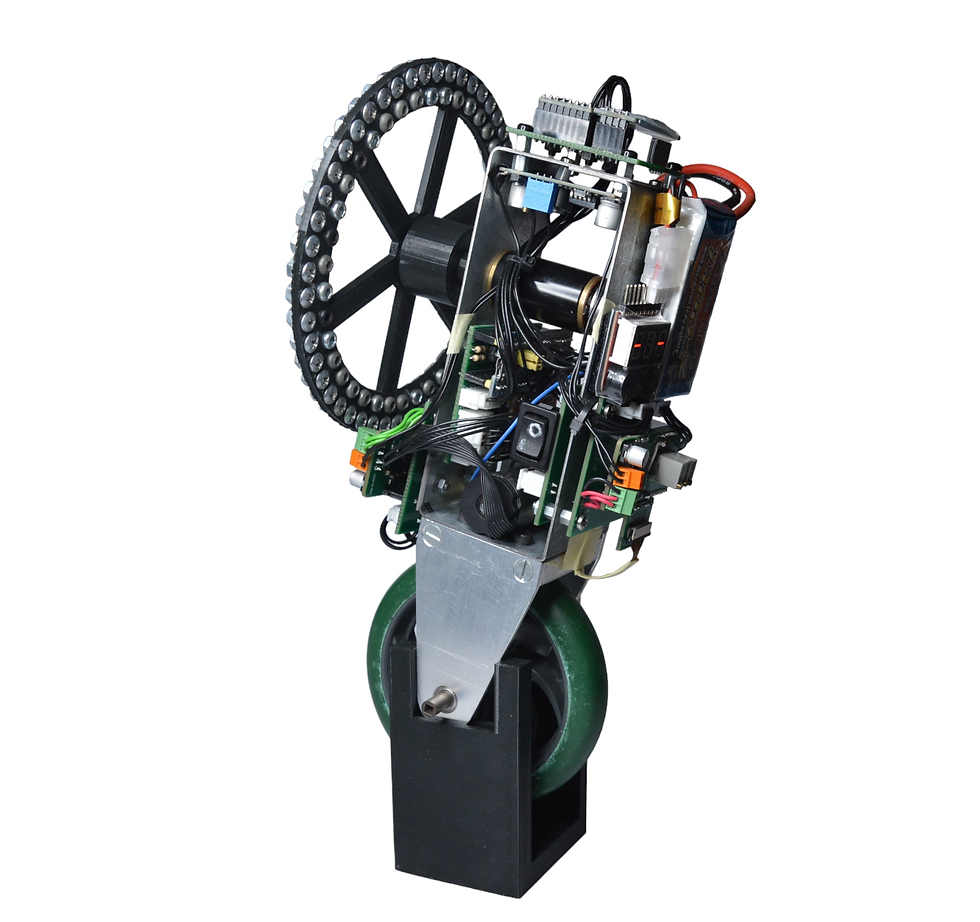Mastering Balance: A Self-balancing Unicycle Robot
- Simon Sultana
- May 21, 2024
- 2 min read
At the core of this project is a robot, not just any robot, but a complex and intriguing one that emulates the actions of a circus performer on a unicycle. This robot, shown in Figure 1, combines mechanical design, control theory, and software engineering to maintain its balance. It uses a single wheel for forward and backward balance (pitch control) and an additional spinning wheel (the reaction wheel) for side-to-side stability (roll control), similar to the challenge of balancing a pencil on your fingertip.

Innovative Control with a Modern Twist
This project stands out for its integration of Bluetooth technology, allowing the robot to be wirelessly controlled. The Bluetooth connection, established through a computer, enables real-time monitoring of the robot’s status and data visualisation through custom-developed software. This approach transforms the complex dynamics of the robot into easily interpretable visual data as shown in Figure 2.

The Approach
The project involved mathematical modelling to predict the robot’s behaviour, refining the electronic components and sensors, and implementing advanced control techniques known as Linear Quadratic Gaussian (LQG), commonly used in aerospace engineering. These techniques have been effectively implemented to maintain the robot’s stability with promising results.
Real-world Applications
Though it may appear to be primarily academic, the principles underlying this unicycle robot have broad applications. In drone technology, these principles improve control and stability for agricultural drones, such as those used by DJI for crop health monitoring through infrared sensors, and in scientific research where drones equipped with LIDAR sensors and 3D cameras are used for creating precise Digital Elevation Models.
In healthcare, similar balance and stability technologies are used for patient mobility aids. Additionally, the automotive industry benefits from these algorithms in the development of self-driving vehicles, for navigation and responding to dynamic road conditions, ensuring both safety and efficiency.
Conclusion
This project bridges the gap between theoretical concepts and practical application, emphasizing practical problem-solving in engineering. It demonstrates how theoretical models can come to life in a robot that balances like a human on a unicycle. More than just about self-balancing, this project challenges the boundaries of robotics by combining hardware and software, and highlights the capabilities of wireless technology and data visualization.
Looking Ahead
The implementation of this self-balancing unicycle contributes to the ongoing evolution in the field of robotics and control systems and opens doors for further research and development. By using wireless control and real-time data visualization, it offers a practical example of how these technologies can be applied to enhance our interaction with robotic systems.
Simon Sultana completed the MSc in Intelligent Signals, Systems and Control in 2023. The work described in this article reflects the work carried out in the project dissertation and was supervised by Prof. Simon Fabri.
The MSc in Intelligent Signals, Systems and Control is being offered as a fully online course. More information is available here

Comentários